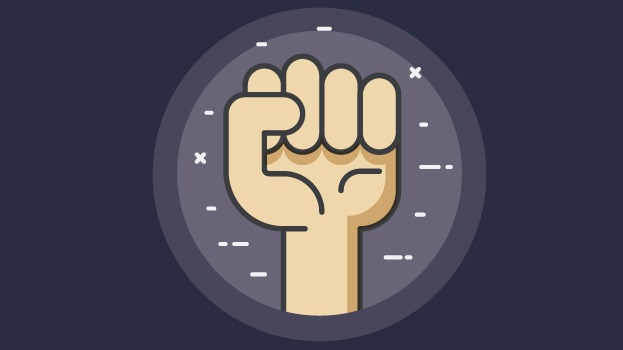Supporting your employees’ mental health is more critical now than ever!
With the COVID-19 pandemic (and the resulting economic recession) leading to a significant and unprecedented worsening of the general population’s mental health, there’s a very high chance some (if not all) of your employees have been affected. And no wonder!
Between battling financial insecurity, unemployment, isolation, declining physical health, as well as general fear among other things, anxiety levels are at an all time high.
As an employer, this is your chance to support your staff and break the stigma around mental health. Whilst you may be thinking it isn’t your place to do so, you really can’t afford not to. The fact is your employees’ mental health and your company’s bottom line are inextricably linked.
Since an employee’s overall engagement, productivity and retention rate directly correlates to their mental health, your business’ success & performance relies on it.
In this light, a great way to prioritise your team’s wellbeing, is to take steps to better understand how your employees are feeling over time. The easiest way to gauge this is by regularly conducting mental health surveys.
Not only do they enable you to collect valuable insight on your team’s general wellbeing, mental health surveys can also help you track trends as well as identify employee concerns so as to address them more efficiently.
Conducting workplace mental health surveys will also help you identify any gaps in your mental health programs and enable you to remedy them effectively.
Whilst the benefits are clear, many business leaders still feel stumped as to what questions to ask or how to approach particular topics. To help you, here are some foundational questions to get you started.
Mental Health Survey Question Options
– Do you feel comfortable talking about your mental health at [company].
(Answer options: strongly agree, agree, neither agree nor disagree, disagree, strongly disagree)
It is reported that 8 out of 10 workers don’t seek mental health treatment because of its stigma. In fact, the current average time between someone’s first experiencing symptoms to when they first seek treatment is 11 years!
This type of question establishes a baseline for the prevalence of stigma around mental health at your company and can measure how it changes over time.
Proactive efforts to talk about mental health to break the stigma will increase employees’ likelihood of seeking support.
– I feel comfortable talking about my mental health at [company] with…
(Answer options: colleagues, managers, HR, company leaders)
This question allows you to understand who your employees are going to for support and how safe they feel with the different levels of management.
Gaining a better understanding of this allows for a targeted and effective workplace mental health strategy / program.
For example, suppose the results say that your employees don’t feel comfortable going to their manager for mental health-related conversations. In that case, you might need to organise a workplace mental health training series that will equip your managers with the strategies to create a safe, supportive and mentally healthy team.
– I have an understanding of what mental health resources are available at my company.
(Answer options: true or false)
A report by the MindShare Partners 2021 Mental Health at Work found that only 50 percent of respondents knew the proper procedures for getting support for their mental health.
The report also found that employees wanted more precise information available on where to go and who to ask for mental health support.
With that in mind, including this question in your survey will help you gauge your employee’s awareness of the available resources and will determine if clearer communication around mental health resources and procedures is needed.
As employers assess their mental health support materials, it’s essential to understand if employees know they exist and how to access them. Also, make sure you pay attention to who is the least aware of the resources available and what information they are looking for.
– What workplace factors, if any, contribute to poor mental health or burnout at [company]?
(Answer options: For this question, we recommend creating a pick list with the most common triggers for burnout, such as unclear job expectations, work-life imbalance and dysfunctional workplace dynamics.)
Ensuring mental health in the workplace relies on much more than providing benefits, self-care and the occasional mental health days.
It is about providing proper resources to address the factors that can lead to employees to suffer and cope with poor mental health. It’s also about putting in place preventive measures, rather than reacting to a problem before it’s too late.
Case in point, the MindShare Partners study mentioned above also found that the most common symptom of poor mental health was burnout (56 percent of respondents).
Burnout remains a big challenge for organisations as it causes high employee turnover, poor employee performance and more.
Understanding and addressing the workplace factors that lead to burnout can improve workplace mental health and help you design a road map to better support your team and workplace.
– I feel like [company’s] leadership prioritises mental health at work.
(Answer options: strongly agree, agree, neither agree nor disagree, disagree, strongly disagree)
The most significant factor that keeps respondents from proactively taking care of their mental health is often because their leaders do not prioritise it.
Organisations may verbally encourage mental health in the workplace, but this doesn’t always translate into action. In fact, studies found that only 54 percent of respondents believed mental health was prioritised at their company, and only 27 percent of respondents believed their company leaders were advocates for mental health in the workplace.
This confirms that it takes more than access to resources to solve poor mental health in the workplace – it takes consistent advocacy. Leaders must actively vocalise their support for mental health, show their vulnerability and lead by example by practicing healthy work habits in order to reinforce a healthy workplace culture.
This question enables you to measure if your leadership team is actually “walking the talk” and prioritising workplace mental health through communication, policies, and actions. It will also allow you to track progression over time.
To Remember
Before you start implementing a mental health survey within your organisation, you must remember that mental health can be a sensitive topic for many.
When you are exploring and implementing mental health metrics for your organisation, be sure to be mindful of the following:
Privacy
Be careful of the nature of the questions you ask your employees and take proactive measures to make sure respondents feel safe (such as making the survey anonymous).
Measuring mental health in a high stigma environment may skew results and do not represent true employee sentiments.
How to use the data
While your findings are intended to provide an overview of the culture of mental health at your company, these findings should never be shared with an individual employee or assumed to be true for all employees.
These findings should provide you with a starting point to better understand your company culture and inform you on programs, policies, and practices to better support your staff.
Accountability
While measuring mental health is a step in the right direction, it is also necessary to take action, no matter how big or small. Mental health should not be measured until you are prepared to do something with the results. Lack of action can lead to mistrust and make existing frustrations worse.
Mental Health Support Services
We highly recommend referring to the following resources when building your mental health surveys & program:
Conclusion
Mental health surveys can drastically improve your company’s culture, your employee’s mental health, employee turnover and employee performance.
They help you analyse your business and make changes, introduce procedures, provide training and create resources to be proactive in helping individuals suffering from poor mental health as well as break the stigma around mental health in the workplace.
Remember a survey is a tool to help guide you on what to focus on and to track progress. Once you have your result, discuss and make an action plan.













 February 10, 2022
February 10, 2022 






